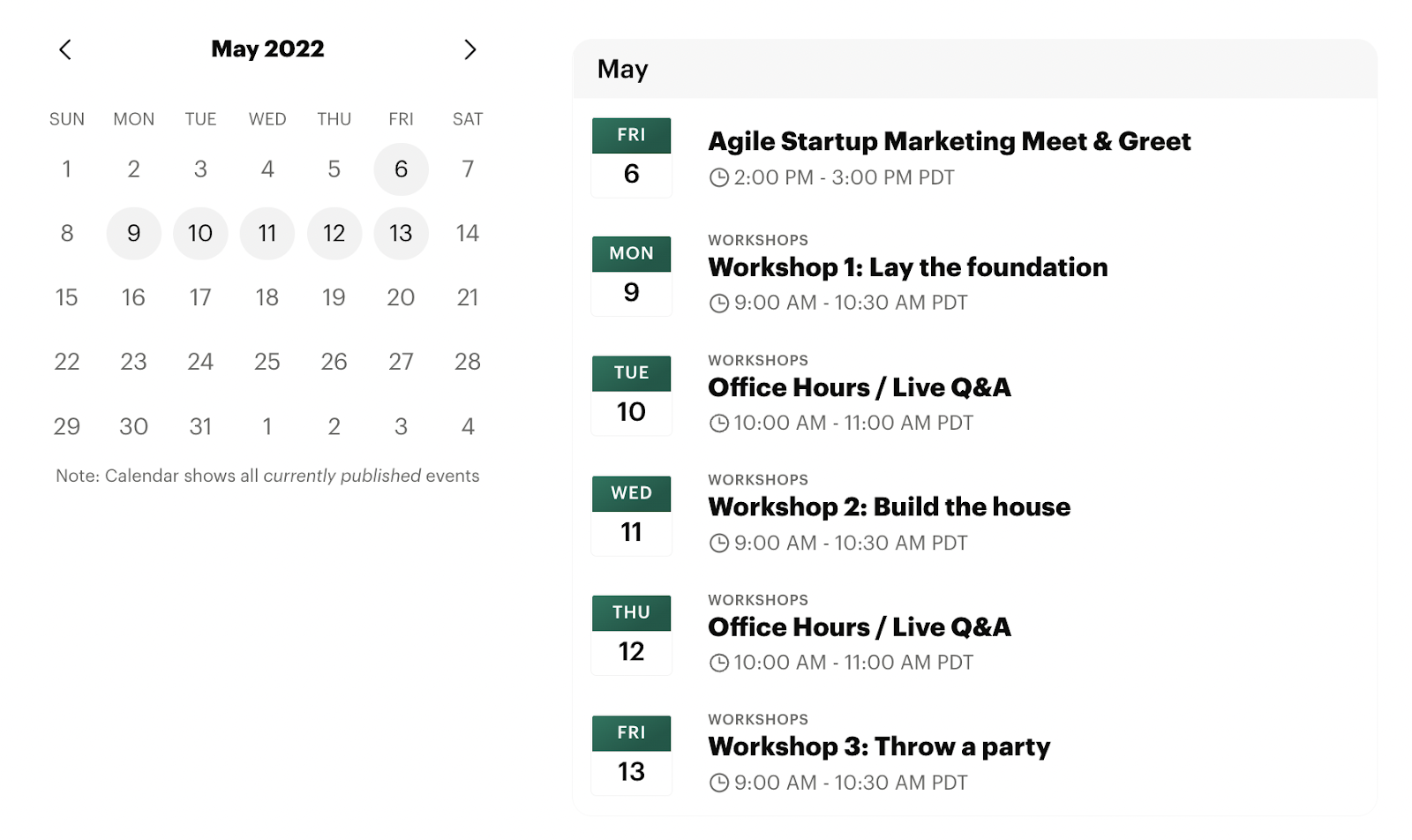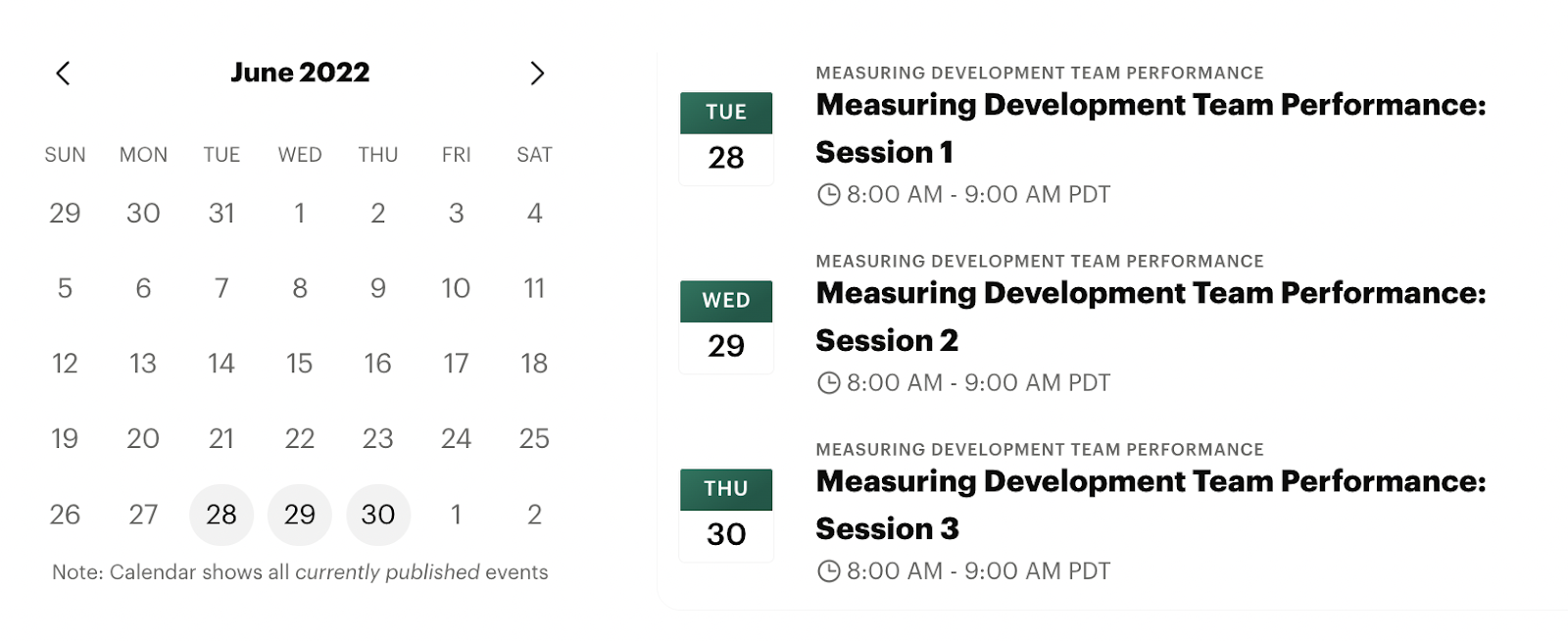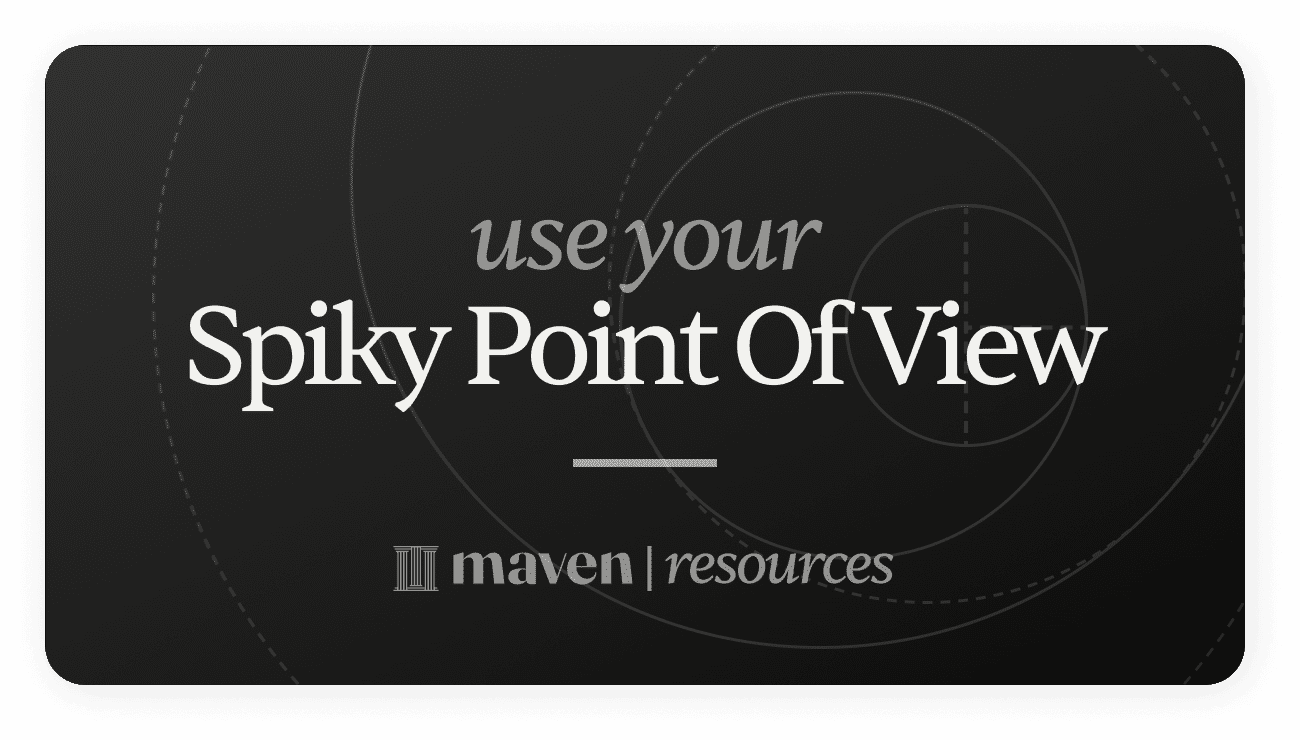If you're a first-time course creator, you might be wondering:
How long should my course be?
How much should I charge for my course?
How many students should I aim for?
Here’s what we recommend for first-time instructors:
Run a 1-week course. Price it at $500 and aim for 10 students. You can run three 90-minute live workshops on MWF.
Let’s dive into why. (By the way, we cover this topic in more depth in the
Maven Course Accelerator, our free program on how to build a course.)
How long should my cohort be?
Three 90-minute sessions over 1 week is a great place to start. We’ve seen dozens of first-time instructors succeed with this format.
For example, Amanda Goetz (Instructor of
Startup Marketing Bootcamp) is a full-time CEO and parent. Her students are also busy marketers and operators. So, she wanted her cohort to be efficient with high ROI. Her course is 1 week: three 1.5-hr live workshops on Mon/Wed/Fri with optional events in between.

Laura Tacho (Instructor of
Measuring Development Team Performance) is a coach/consultant for engineering managers. Her clients have limited time, so she wanted her course to be dense and high ROI. She repurposed her top frameworks into three 1-hr live workshops on Tue/Wed/Thu.

You might be wondering: Will a 1-week course be too short? It depends on your scope. Building a shorter course means you’ll cover fewer topics but go deeper. For example, if you’re teaching a data science course, it would be a mistake to squeeze 6 weeks of content into 3 days and promise that students will become data scientists. Instead, you could trim your content to focus on visualizing datasets with Python over 3 days. This narrower scope offers a more concrete and realistic outcome.
A new Maven instructor shared how cutting scope helped her get unblocked. This is a great example of being “ruthlessly practical.”
“I started with a big, ambitious idea. I kept putting off creating content because it felt so big. Then, I figured out how to narrow the scope of the course to fit into 4 sessions. It immediately became clear how my content can come to life.”
You might ask: “Is 1 week enough to build community?”
Yes, both Amanda and Laura’s courses are highly rated (over 9/10) because of the community and interactivity. They create ample opportunities for their students to discuss and collaborate throughout the week. We recommend using breakout rooms and facilitating discussion in the community to maximize interaction.
How should I price my course?
Here are four questions to help you think through course pricing at any stage:
What is your student’s ability to pay?
What are the alternatives to your course and how is your course better?
What’s the return on investment for your student?
What is your baseline for how much you want to earn per hour?
1. Ability to pay
To understand your student’s price sensitivity, identify who the end-payer for your course is. For hobbyist or creator courses, students pay out of pocket, so their price sensitivity will be much higher. However, professional courses (topics like management, software engineering, marketing, sales) may qualify for company reimbursement and tend to be priced higher as a result.
2. Alternatives
To understand the value that your course provides, consider how else students might be able to get the same knowledge or outcomes. What are the learning alternatives to your course, and how does your course represent a premium over those alternatives?
A common misconception is that students won't pay for an expensive course when there are so many free resources online. For example: libraries have always existed. Anyone can go to the library and learn a skill for free. But most people still don’t. Why is that?
Students don’t buy courses for information, they buy courses for transformation. Part of the value of a cohort-based course is the accountability and community. The live aspect of a cohort-based course promises an extra push that asynchronous materials don't. Plus students love learning alongside motivated peers. That's why cohort-based courses are able to charge a premium over self-paced learning alternatives.
3. Student return on investment
For professional courses, you can measure student outcomes by considering how your course will impact their earning potential. For example: could they get a raise by improving their skills or changing careers.
For non-professional courses, you could measure outcomes through the value your course delivers–what is it worth to someone to have a community of like-minded peers, or a new skill that they've been aspiring to?
4. Your return on investment
Many instructors consider student demand but overlook their own time & earning requirements. What’s the minimum amount that you want to make per hour of effort? You should set a price that is sustainable and motivating for you to run multiple cohorts.
Remember that your first cohort will require the most up-front work. But over time, you'll invest fewer hours in operations & content development, so your hourly earnings will improve.
If you’re still not sure, the average Maven course is ~$500. Remember that the price you set now doesn’t have to be the price you have forever: You can increase your price in future cohorts as you improve the quality. For a professional audience, the $500 price point doesn’t raise eyebrows when students ask their boss to get reimbursed.
Some instructors prefer to price higher and offer an early bird discount for their first cohort. This can reward early adopters and create urgency. If you want to give it a try, here’s how you can
create discount codes on Maven.
How many students should I aim for?
Aim for a minimum cohort of 5-10 students. But, don't cap the cohort unless you have a clear reason to. This is a good minimum number of students to facilitate discussions in breakouts and in your community will help students build camaraderie, even in a 1-week cohort.
You might be wondering: “What if I get way more student demand for my course than expected?” First, you should celebrate because that’s awesome! We’ve seen some instructors have 250+ students in their first cohort. Many instructors can support ~30 students without additional help by strategically using breakout rooms and facilitating peer feedback in the community. If your cohort grows beyond 30, instructors have asked colleagues, friends, and family to assist with simple Zoom operations (opening/closing breakouts, admitting students, playing music).
Prospective students may say to you: “I want to take this course but I can’t make the dates.” If that happens, that’s a great sign you’re potentially on your way to course-market fit. You should engage with them and open your next cohort so they can enroll.
---
Ready to get started? Over 3,000 subject matter experts have gone through the
Maven Course Accelerator, a free program to turn your knowledge into a community-driven, live course.
Enroll today and get access to the self-paced course (it's free).
We’ve designed our terms to be simple and instructor-friendly. You always own your content/IP. When you start earning on Maven, you keep 90% of your course revenue minus Stripe transaction fees. We only make money when you do.







